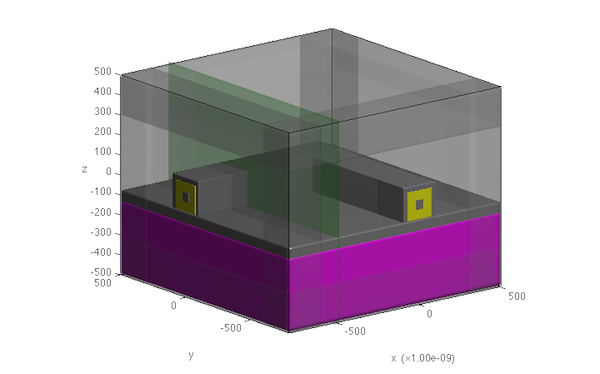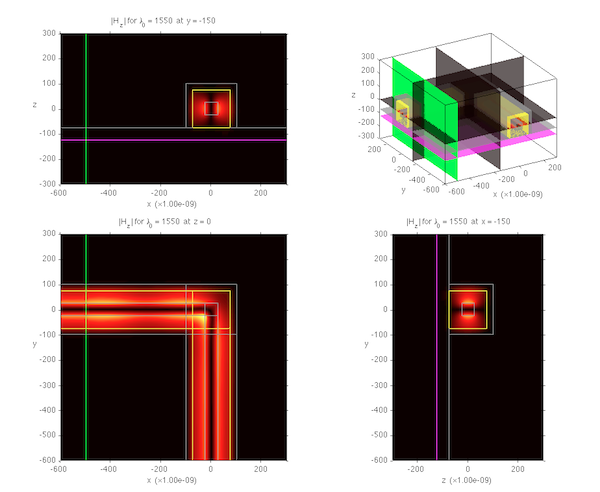FD3D
FD3D is a companion C program of MaxwellFDFD. It allows the users of MaxwellFDFD to solve the frequency-domain Maxwell's equations in a 3D domain. FD3D uses iterative methods to avoid the large memory requirement of direct methods for 3D problems.
System Requirements
UNIX-like operating system (e.g., LINUX or OS X)
PETSc 3.5 or later
Download
Press the “Download ZIP” button in the right panel of FD3D's GitHub page.
Examples
Structure of a 3D plasmonic coaxial waveguide bend (green plane: modal source)
 |
... and the wave propagating thorough the 3D plasmonic coaxial waveguide bend
 |
More examples: [link]
How to Use
FD3D can be installed on personal computers, but it is typically installed on LINUX clusters to handle large 3D problems.
Once the solution is obtained in a LINUX cluster, you can download the solution files to your personal computer and load them in MaxwellFDFD for further analysis.
How to Cite
You are welcome to cite the following papers about the techniques used in FD3D:
W. Shin and S. Fan, “Choice of the perfectly matched layer boundary condition for frequency-domain Maxwell's equations solvers,” Journal of Computational Physics, vol. 231, pp. 3406–3431 (2012) [pdf]
W. Shin and S. Fan, “Accelerated solution of the frequency-domain Maxwell's equations by engineering the eigenvalue distribution,” Optics Express, vol. 21, pp. 22578–22595 (2013) [pdf]
You can also cite the URL of FD3D's GitHub page as follows:
W. Shin, FD3D Webpage, 2015. https://github.com/wsshin/fd3d
If you use LaTeX, here is the BibTeX record for the GitHub page:
@webpage{fd3d-webpage,
Author = {Wonseok Shin},
Note = {{https://github.com/wsshin/fd3d}},
Title = {{FD3D} {W}ebpage},
Year = {2015}
}